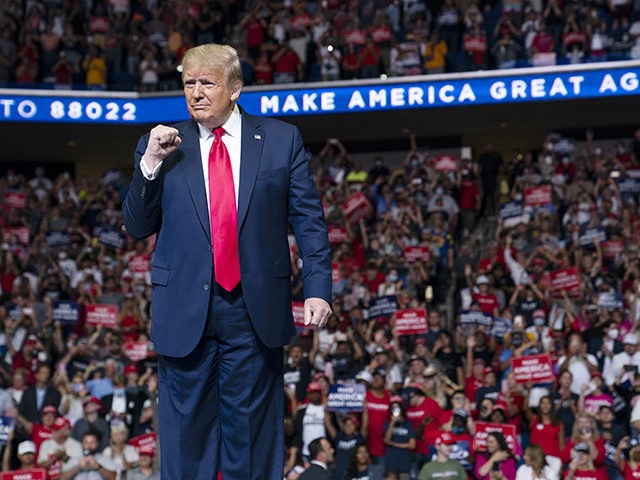The U.S. economy added 1.8 million jobs in July and the unemployment rate fell to 10.2 percent, providing reassurance that the labor market has kept up some of its post-lockdown momentum.
The numbers were better than anticipated. Economists had forecast an addition of around 1.5 million jobs and a decline in the unemployment rate to 10.6 percent from 11.1 percent last week.
The economy has added around 9.1 million jobs in the past three months. The increase in the ranks of employed workers shows that companies ramped up hiring as the economy reopened and consumers came back to stores, restaurants, and other businesses that had been shuttered in March and April. Despite the gains, employment in July was lower than its February level by 12.9 million, or 8.4 percent
The largest employment increases in July occurred in leisure and hospitality, government, retail trade, professional and business services, other services, and health care, the Bureau of Labor Statistics said in its monthly report on the employment situation in the U.S.
The leisure and hospitality sector added 592,000 jobs in July, accounting for about one-third of the gain in total nonfarm employment in July. Restaurants and bars
added 502,000 employees, following gains of 2.9 million in May and June combined. This was the hardest hit area during the pandemic lockdowns when many businesses were forced to shut their doors or saw demand plummet.
Manufacturing had a strong month, in large part because of the auto sector. Employment increased by 26,000. A gain of 39,000 in motor vehicles and parts was partially offset by losses in fabricated metal products, machinery, and computer and electronic products. Although manufacturing has added 623,000 jobs over the past 3 months, employment is 740,000 lower than in February, highlighting that the recovery has brought us less than halfway back to the pandemic starting point.
In a surprise, government employment rose by 301,000 in July. Typically, public-sector employment falls in July. Nonetheless, government jobs are still 1.1 million lower than the February level. It appears that some of the typical July declines happened earlier than usual this year due to the lockdowns.
The black unemployment rate fell from 15.4 to 14.6 percent for the month. Prior to the pandemic, black unemployment had fallen to record lows.
Yet even despite the pandemic-driven increase, the black unemployment remains below the 16.6 percent rate hit in the second year of the Obama administration. As well, the gap between black and white unemployment is narrower than was typical before Trump’s election, when black unemployment usually ran at twice the white rate. In fact, the black-white unemployment gap is at the narrowest it has ever been in data going back to the 1970s.
And black gains in employment for the month were greater than those for whites and Hispanics.
The employment gain in today's #JobsReport is higher for blacks (1.4%) than for whites (0.6%) or Hispanics (0.7%), largely driven by job growth in warehousing and delivery, industries where blacks are overrepresented
— Julia Pollak (@juliaonjobs) August 7, 2020
A report on private payrolls from ADP and Moody’s Analytics on Wednesday estimated that businesses increased their workforces by 167,000 million in July. The ADP reports have been wildly off in recent months, apparently unable to correctly anticipate the impact of the reopening of the economy. The initial estimate for estimate June was 2.4 million jobs, which was revised up to 4.3 million. Similarly, the estimate for May initially showed a loss of 2.76 million jobs, and had to be revised up to show a gain of 3 million.
The Trump administration’s aid programs appear to have worked to stave off economic disaster in the face of the coronavirus pandemic. Direct relief payments to taxpayers and enhanced unemployment have kept incomes up despite the huge rise in unemployment, which in turn has boosted demand for consumer products. The Paycheck Protection Progam, which provides forgivable loans to small businesses that avoid layoffs, also seems to have supported employment and rehiring.
Those programs, however, have largely run their course. The $600 a week enhancement to unemployment benefits expired a week ago. The Paycheck Protection Program was meant to support employment for just a few months and most of the funds are now exhausted. Negotiations to re-up the programs have stalled on Capitol Hill, although President Donald Trump has said he will use executive orders to maintain federal support for the economy if Congress cannot agree on a plan.

COMMENTS
Please let us know if you're having issues with commenting.